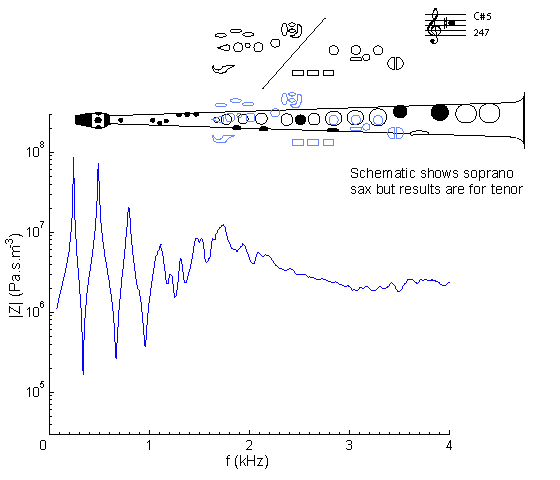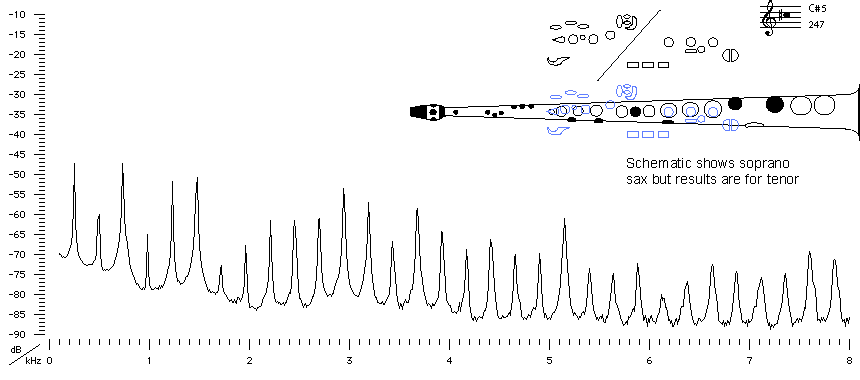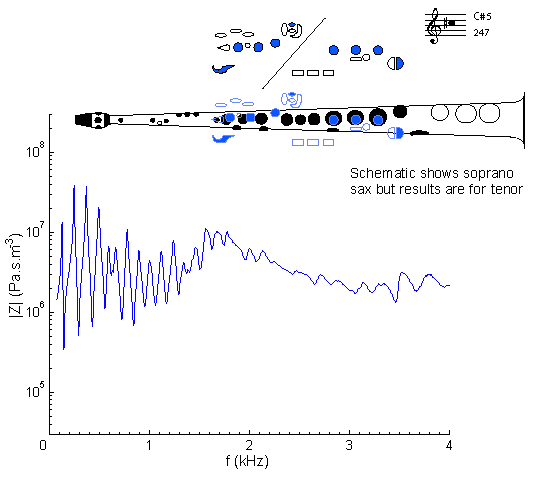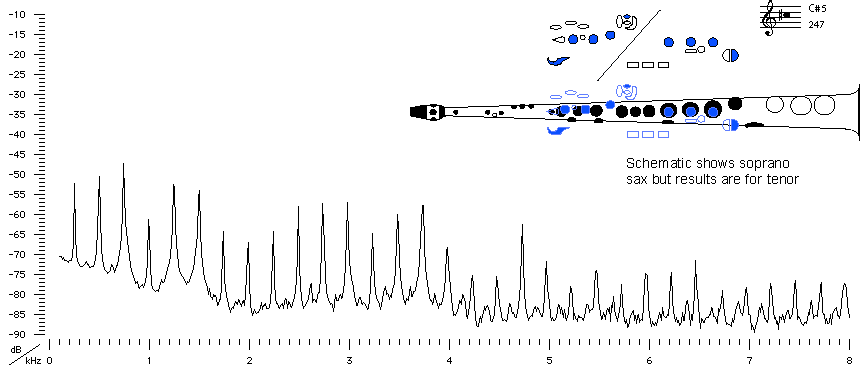| Acoustics of the saxophone |
Bb tenor saxophone |
C#5 |

|
Fingering Acoustic schematic Non-specialist introduction
to acoustic impedance Notes are the written pitch. |
At frequencies below about 1 kHz, this curve looks rather like that for C5, but raised in frequency. At higher frequencies, however, the situation is complicated by the cut-off frequency. Here we have only two peaks that fall in the harmonic series: this fingering will bugle an octave, but no other note in the series. The first peak can be reduced in magnitude and shifted in frequency using a register hole (operated by the octave key): see C#6.
For general comments about the first register, see A#3. Compare with the impedance spectrum for a soprano sax on written C#5: same fingering but sounding one octave higher.

Sound spectrum
of a Bb tenor saxophone
played using fingering for C#5.
For more explanation, see
Introduction to saxophone acoustics.
Alternative Fingering |
tenor saxophone |
 |
Fingering Acoustic schematic Non-specialist introduction
to acoustic impedance Notes are the written pitch. |
This is the first fingering (albeit an alternative one) for a note in the second register – meaning that it plays at the second peak on the impedance spectrum. It differs from C#4 (the corresponding note in the first register) in that it uses a register hole (operated by the octave key). This causes a leak in the bore that weakens (and mistunes) the first impedance peak, but has little affect on higher peaks – see register hole for an explanation, and compare with C#4. This impedance spectrum is almost identical to that for C#4, including the frequencies above the cut-off frequency, except for the first peak which is weakened and sharpened slightly, thus the reed sounds at the second peak instead, an octave above.

|
Contact:
Joe Wolfe
/ J.Wolfe@unsw.edu.au |